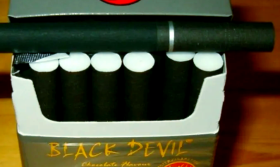461. Quitting Smoking: How to Survive a Bad Hair Day Without Cravings
Introduction
Quitting smoking is one of the most challenging yet rewarding decisions a person can make. However, stress—especially on a "bad hair day" when everything seems to go wrong—can trigger intense cravings. The key to staying smoke-free is developing healthy coping mechanisms. This article explores practical strategies to overcome cravings, manage stress, and maintain your commitment to a smoke-free life—even on the toughest days.

1. Understanding the Link Between Stress and Cravings
When you quit smoking, your brain craves nicotine, especially during stressful moments. A "bad hair day" (or any frustrating situation) can amplify these cravings because:
- Nicotine Withdrawal – Your body misses the dopamine rush from smoking.
- Habitual Response – If you used to smoke to relieve stress, your brain still associates stress with cigarettes.
- Emotional Triggers – Frustration, anxiety, or disappointment can make you reach for a cigarette out of habit.
Understanding this connection helps you prepare better coping strategies.
2. Immediate Ways to Resist Cravings
When a craving hits, try these quick fixes:
A. Delay the Urge
- Tell yourself: "I’ll wait 10 minutes before deciding." Often, the craving passes.
B. Deep Breathing
- Inhale deeply for 4 seconds, hold for 4, exhale for 4. Repeat 5 times. This calms your nervous system.
C. Drink Water
- Sipping water helps distract your mouth and reduces the urge to smoke.
D. Chew Sugar-Free Gum
- Keeps your mouth busy and mimics the hand-to-mouth motion of smoking.
3. Long-Term Strategies to Stay Smoke-Free
A. Replace Smoking with Healthy Habits
- Exercise – Walking, yoga, or a quick workout releases endorphins.
- Hobbies – Painting, journaling, or playing an instrument redirects focus.
- Mindfulness & Meditation – Reduces stress and helps you stay present.
B. Build a Support System
- Join a Quit-Smoking Group – Sharing struggles with others helps.
- Tell Friends & Family – Accountability increases success rates.
- Use Quit-Smoking Apps – Track progress and get motivational reminders.
C. Avoid Triggers
- Stay away from smoking areas.
- Change routines linked to smoking (e.g., coffee breaks).
4. Handling a "Bad Hair Day" Without Smoking
Bad days happen, but they don’t have to derail your progress.
A. Reframe Your Mindset
Instead of thinking, "I need a cigarette," say:
- "This is temporary."
- "I’ve survived worse without smoking."
B. Self-Care Instead of Self-Sabotage
- Take a relaxing bath.
- Listen to uplifting music.
- Treat yourself to a healthy snack.
C. Laugh It Off
- Watch a funny video or call a friend who makes you laugh.
5. When Cravings Feel Overwhelming
If the urge is too strong:
- Call a Quitline – Many countries offer free support.
- Use Nicotine Replacement Therapy (NRT) – Patches or gum can help.
- Remind Yourself Why You Quit – Write down your reasons and read them.
Conclusion
Quitting smoking is a journey, and bad days are part of it. By understanding cravings, using distraction techniques, and building healthy habits, you can stay smoke-free—even on the worst hair days. Remember: every craving you resist makes you stronger.
Stay strong. You’ve got this!
Tags: #QuitSmoking #NoMoreCravings #HealthyHabits #StressRelief #BadHairDay #SmokeFreeLife #Mindfulness #SelfCare #NicotineFree
This article provides actionable tips while keeping the tone motivational. Let me know if you'd like any modifications!












